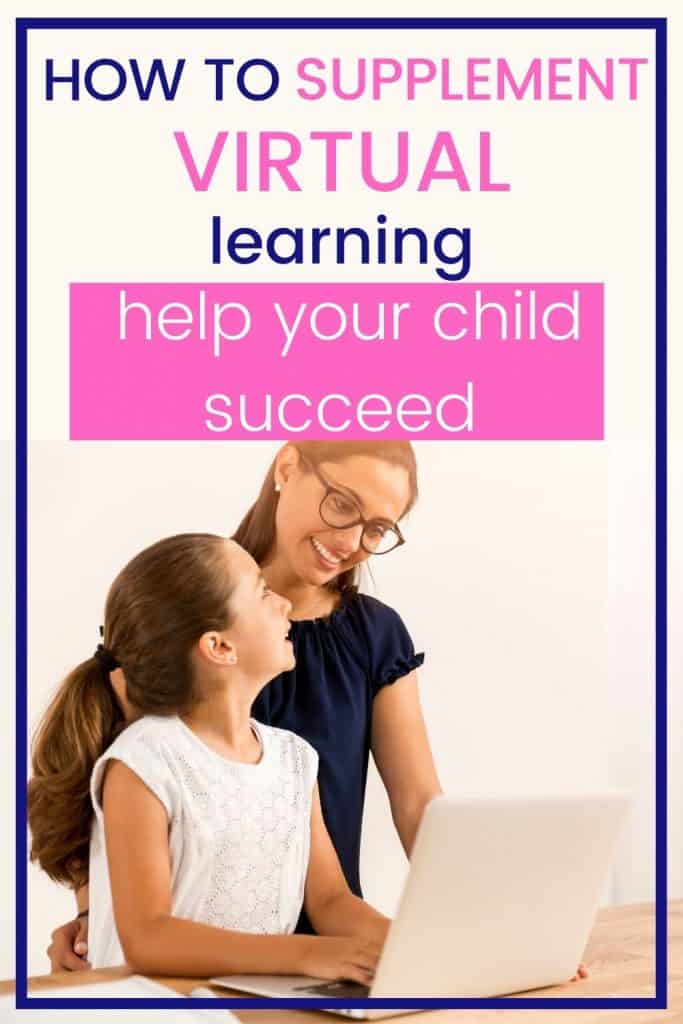When schools shut down across the country, students were forced to give up their social lives and daily routines. But students weren’t the only ones forced to alter their daily routines—parents throughout the countries have been forced to play teacher alongside their regular jobs.
And when young students are being taught through remote learning, they need help staying focused and on task. After all, if we as working moms have a tough time paying attention to our Zoom meetings, you can imagine how difficult virtual learning is for an elementary schooler.
If you are a parent-turned-teacher for your young children, knowing where to start and how to stay organized are amongst the largest challenges you have to face while waiting for schools to reopen. Luckily, many resources are available to help parents throughout the country get creative, face new challenges, and balance their work life with the role of teaching their young kids.
I’ve created a list of helpful tips and information for parents who are struggling with their newfound role as teacher. This list provides information on how to prioritize your time, make the most out of your space, and find online resource aids for your kids.
Table of Contents
Resources to Help with Online Classes
As most schools have transitioned to online learning, educators have found ways to share classroom lessons alongside live video sessions. Many teachers pre-record videos and create worksheets and activities for their students to do on their own.
Because many young kids have a hard time focusing when asked to work alone, there are plenty of online resources that can help fill in the gaps.

Some tutoring sites offer tons of links to supplementary resources and platforms your kid can use to get help with subjects they’re struggling in, dive deeper into subjects they’re interested in, and learn about new things they don’t cover in school. These websites aim to make it easy to find lesson plans on a diverse range of topics and make learning from home more accessible for all families.
They also have practical resources and emotional support to help parents stay organized, composed, and in touch with their kid while they’re learning from home.
Benefits of homeschooling instead of online education
Many parents of young children feel that virtual learning wasn’t best for their kids. This concern led many parents to consider homeschooling their little ones out of fear that traditional school would cause them to fall behind.
If you are considering homeschool as a feasible alternative to your child’s current curriculum, rest assured that there are many benefits to this option:
RELATED: Tips for homeschooling more than one grade level
You can teach kids at their own pace
Kids entering into elementary schools are often forced into large classroom settings where teachers have to set their curriculum at a moderate pace. If you see that your child has a gifted mind that’s being stifled by the slow pace of traditional schooling, homeschooling may be a great option for them. Or at the same time, if there’s a topic your child struggles with, you’ll be able to give one-on-one attention to your child and help them understand.
Together, you and your child can assess their pace and choose to tackle more advanced subjects and skills far beyond their grade level. Your child can also choose to focus on subjects that traditional schooling often neglect, like art and music.
Control and limit their screen time
When the traditional school system became entirely remote, parents were forced to watch their kids spend entire days on their computer. Not awesome.
RELATED: 7 fun ways to limit screen time for kids
When you’re in charge of how your child learns, you can also control how much of their education will be online versus outdoors or through kinesthetic learning and practical application. Printing out your lesson plans, using creative storytelling to teach your kids different subjects, and going on (masked) educational field trips are all great ways to prevent your child from getting burnt out on screen time.
Avoid difficult uncertainties in your schedule
In some regions, kids have already gone back to in-person schooling, and eventually the rest will follow suit. Parents relying on traditional schooling don’t get to decide when their kid’s school will return to in-person learning. Or if they are doing in-person (or hybrid) learning, the plans could change at the drop of a hat.
For parents concerned about their kids returning to school, homeschooling may be a better alternative to risking exposure and forcing their children to wear a mask all day. Plus, it’s easier to establish a routine if you know what to expect.
Making time for play during non-traditional education
It’s essential that young kids get their fair share of playtime while doing online schooling. Whether you’ve decided on the homeschool route, or are just taking a more hands-on role in your child’s virtual education, it’s very important to make sure that they have a balanced work-play schedule.
If the increased time spent on the computer is making it hard for your kid to pay attention, taking breaks often can actually help them regain focus.
If your kid has to spend a lot of time on video sessions with their teachers, make sure that after they get off the video you take them outside, have a lunch break, or give them time to do whatever they want.
For young kids, it’s healthy to maintain a balance of work time and active time. This time can be spent doing activities that are fun, educational, and off-screen.

Using food to learn, like counting pieces of candy, is a great interactive way to teach your kid mathematical and tactile skills while giving them a break from screens. Kids also learn math and fine motor skills from helping to prep food and cook.
RELATED: Best kitchen tools for kids
They can also practice writing in chalk on the driveway or act out history lessons by turning the living room into a stage. Fun activities like this can make them forget that they’re learning and will even help them develop new skills more deeply.
Keeping work and play space separate
Your home has now become both your office and their classroom. Because this is a familiar setting for kids, it’s easy for them to get distracted by toys, TV, their siblings, and anything that wouldn’t be in a traditional classroom. It’s important to establish a separate area that can be used solely as a classroom during the day so kids don’t get distracted.
RELATED: How to get your kids to play independently
If possible, try to convert one of the rooms in your house to a school-only zone. This means any toys, crafts, TVs, or other non-school objects shouldn’t be kept in the room.
RELATED: Organizing your child’s toys
Instead, fill it with items usually found in classrooms like pencils, paper, and notebooks. If you have spare chairs or desks, move them to this room and make sure they are not used for anything but schooling.
If you don’t have a spare room to use, it’s ok to use the kitchen table or counter. To convert this area into a classroom, try storing some surrounding cabinets with school supplies and laying down a paper tablecloth for them to draw on.
At the beginning and end of the day, get your kids to set up and clean up the “classroom.” This will make them feel like they’re playing a part in transforming your kitchen into an entirely new environment, which feels like playtime and gets them excited to learn.
On that note, it’s important that you don’t let any learning areas get too messy. As every parent knows, kids tend to spill glue, drop food, and make things sticky, so it’s okay for them to occasionally create a bit of clutter. But be careful to not let kids get too comfortable—just because they’re in their home and don’t have a teacher watching over them doesn’t mean they should abuse this area. To keep the school space “special,” kids should eat lunch in separate areas during the day and only drink water during class to avoid sticky spills.
It’s important that kids follow as many of the same rules at home as they would at in-person school. This means they can’t get out of bed 10 minutes before class starts, go to school in sweats or pajamas, or have the TV playing in the background during class.

You set the tone for these rules. Make sure you’re dressed and ready to take school seriously, and your kids will follow suit.
Staying motivated at home
Any parent juggling working and teaching from home deserves a round of applause. It’s an extremely challenging task, and probably one that most parents never thought they’d be responsible for.
Keep in mind that your kids are just as confused and frustrated as you are when big changes happen in your lives. What’s most important is that you stay motivated and empowered to find tools and tricks that’ll make remote learning easier.

If you encourage your kids to stay positive and find creative ways to make the home learning process fun, it’ll keep your spirits up while you wait for them to return to school. Or you may just find that homeschool is better for you and your kids both.
About the contributor
Eric M. Earle is an educator and tutor whose mission is to help students improve their test scores. He is the founder of TutorPortland.com and co-founder of ZoomTutor.com, a great resource for supplementation to online learning.
